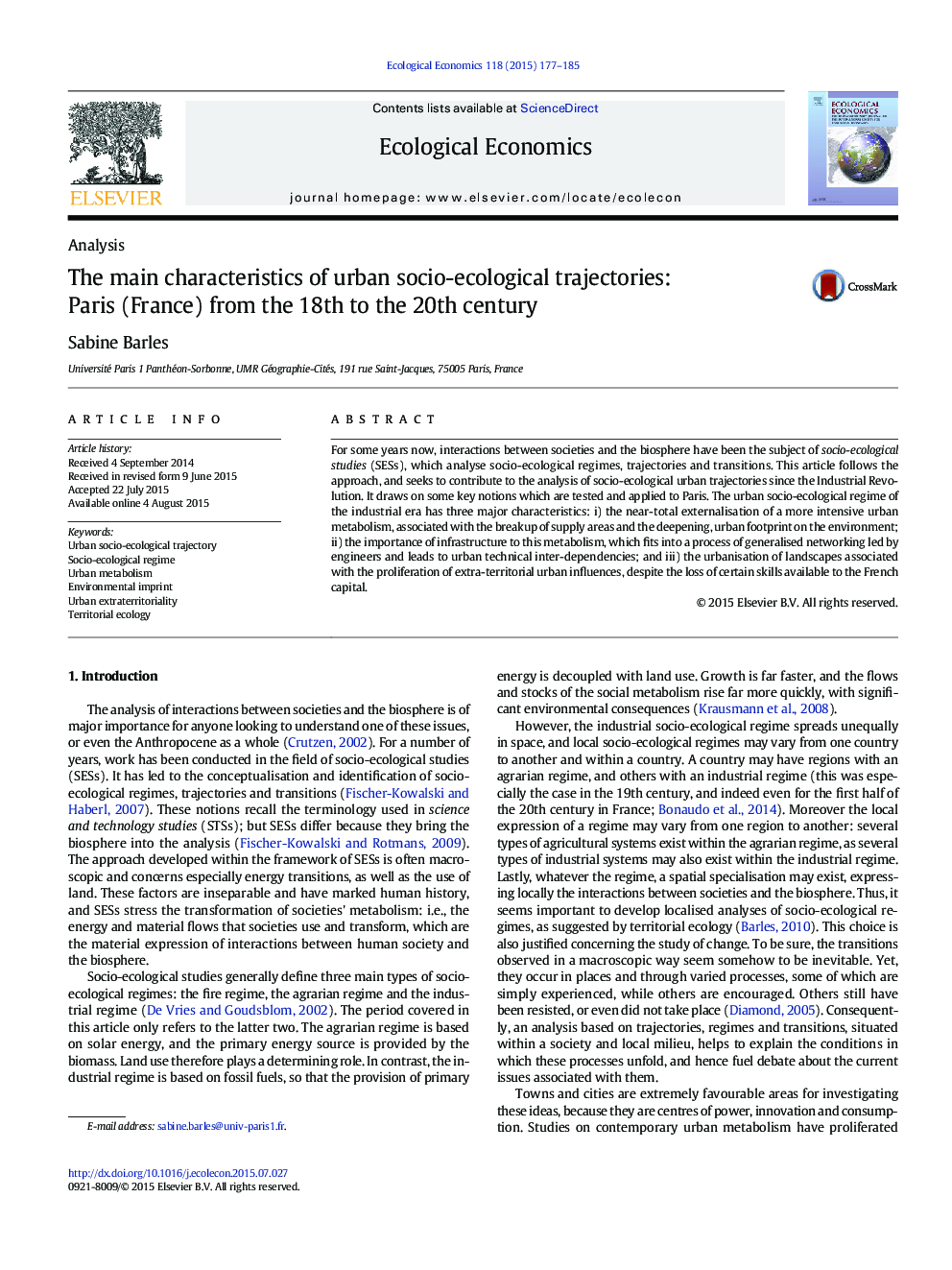| Article ID | Journal | Published Year | Pages | File Type |
|---|---|---|---|---|
| 5049370 | Ecological Economics | 2015 | 9 Pages |
â¢The article analyses the urban socio-ecological trajectory of Paris, from the 18th to the 20th century.â¢The Industrial Revolution and urbanisation have led to three main metabolic changes.â¢The intensification, externalisation and deepening of the imprints of urban metabolismâ¢The growing infrastructural dimension of urban metabolismâ¢The urbanisation of landscape and the creation of urban extraterritorialities
For some years now, interactions between societies and the biosphere have been the subject of socio-ecological studies (SESs), which analyse socio-ecological regimes, trajectories and transitions. This article follows the approach, and seeks to contribute to the analysis of socio-ecological urban trajectories since the Industrial Revolution. It draws on some key notions which are tested and applied to Paris. The urban socio-ecological regime of the industrial era has three major characteristics: i) the near-total externalisation of a more intensive urban metabolism, associated with the breakup of supply areas and the deepening, urban footprint on the environment; ii) the importance of infrastructure to this metabolism, which fits into a process of generalised networking led by engineers and leads to urban technical inter-dependencies; and iii) the urbanisation of landscapes associated with the proliferation of extra-territorial urban influences, despite the loss of certain skills available to the French capital.
